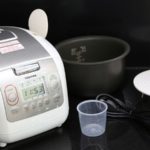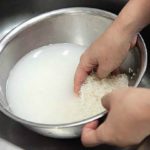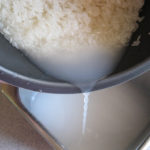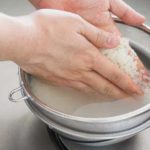Japanese rice is renowned for its aromatic fragrance and sticky texture. However, its high price tag often discourages people from purchasing it regularly.
Reference:
Don’t worry! With the tips in this article, you can achieve the same delicious results with cheaper rice.
1. Measuring Rice
The Japanese are meticulous when it comes to measuring rice. Each household usually has its own rice measuring cup, and when scooping, they use chopsticks or their fingers to level the rice, creating a slight mound. This ensures they get a generous serving.
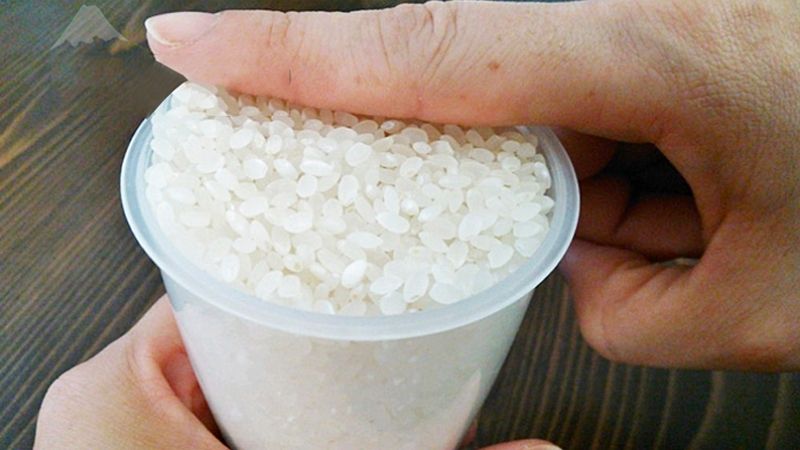 The Japanese way of measuring rice
The Japanese way of measuring rice
2. Rinsing Rice
While most Vietnamese people rinse their rice once or twice to retain some nutrients, the Japanese have a different approach. They rinse their rice multiple times to remove the outer bran, along with protein and fat that may have oxidized and turned sour during storage. This extra step ensures the rice tastes better after cooking.
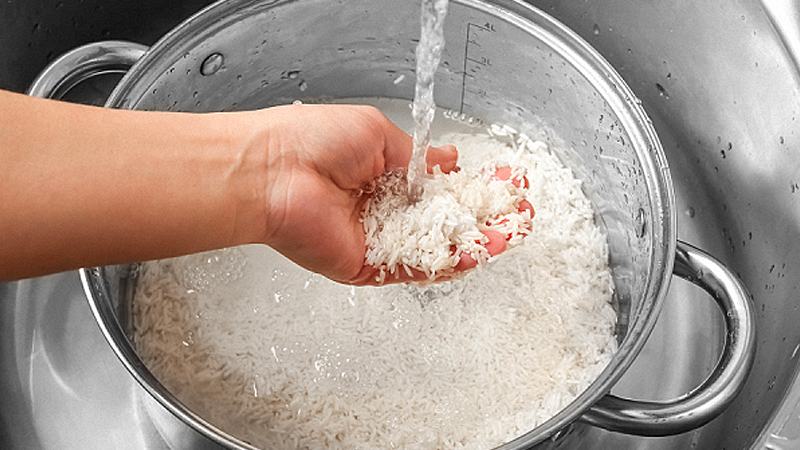 Rinse rice until the water runs clear
Rinse rice until the water runs clear
Instead of focusing on the number of rinses, the Japanese simply rinse until the water runs relatively clear, and the rice grains look clean.
3. Water-to-Rice Ratio
Typically, you might measure water by the knuckle of your finger when cooking rice. However, the Japanese are more precise. They use a 1:1 ratio of water to rice for fresh rice (less than 3 months old). For older rice, they slightly increase the water to a ratio of 1.1:1.
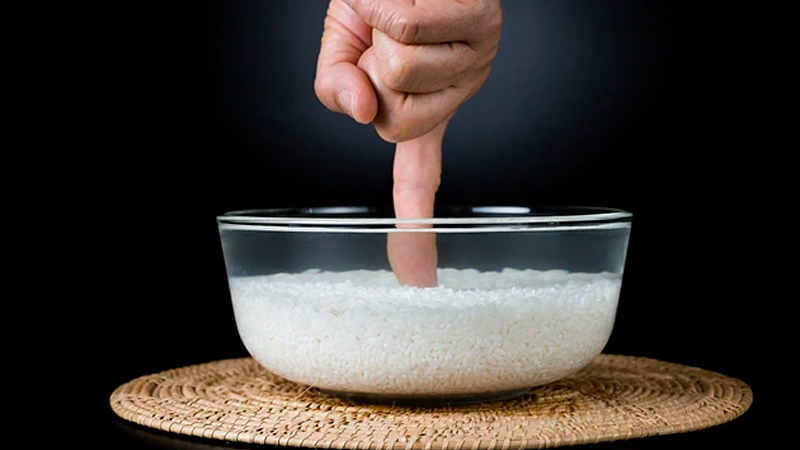 Japanese water-to-rice ratios
Japanese water-to-rice ratios
4. Soaking Rice
Soaking rice before cooking is a common practice, as it is believed to make the grains softer and the cooked rice more sticky. However, in modern times, most families use electric rice cookers with a “quick cook” function, which eliminates the need for pre-soaking. The rice will be adequately soaked and softened during the cooking process.

5. Adding Ice Cubes
To achieve stickier and more delicious rice, the Japanese often add 1-2 ice cubes to the cooker after completing the previous steps and before starting the cooking process.
The ice slows down the absorption of water by the rice grains and increases the amount of amino acids, preventing enzyme breakdown. This results in more fragrant and tasty rice.
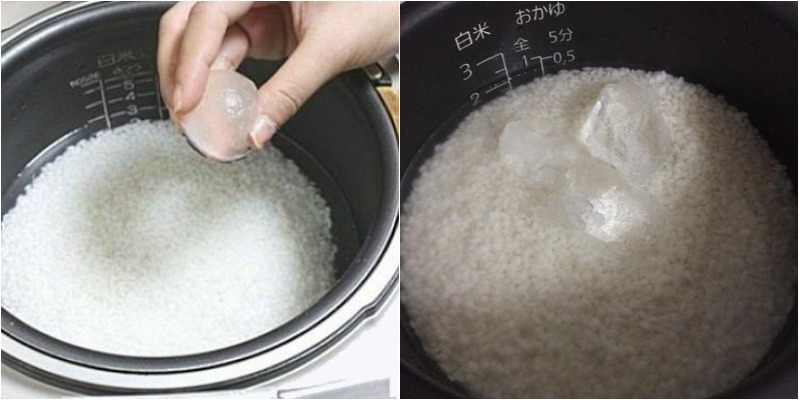
6. Using Oil
It might seem unusual to add oil or butter to rice, but the Japanese often include a small amount of butter, sesame oil, or olive oil during the cooking process. This extra step ensures the cooked rice grains are shiny, soft, sticky, and flavorful.
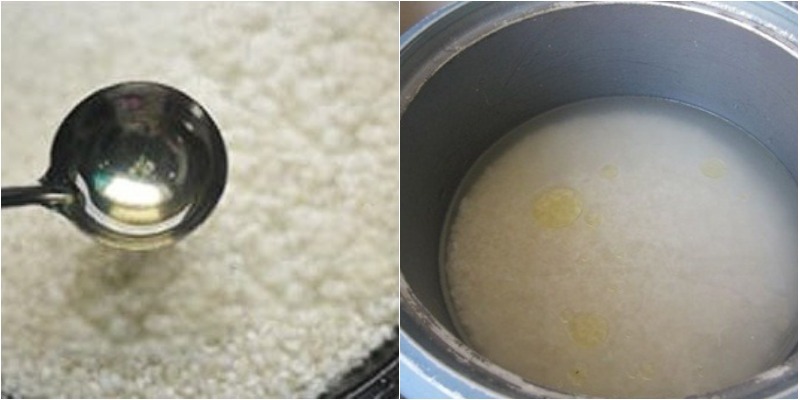
7. Fluffing the Rice
In the past, rice was typically fluffed after the water had been fully absorbed. However, with modern electric rice cookers, many people forget to fluff their rice before serving.
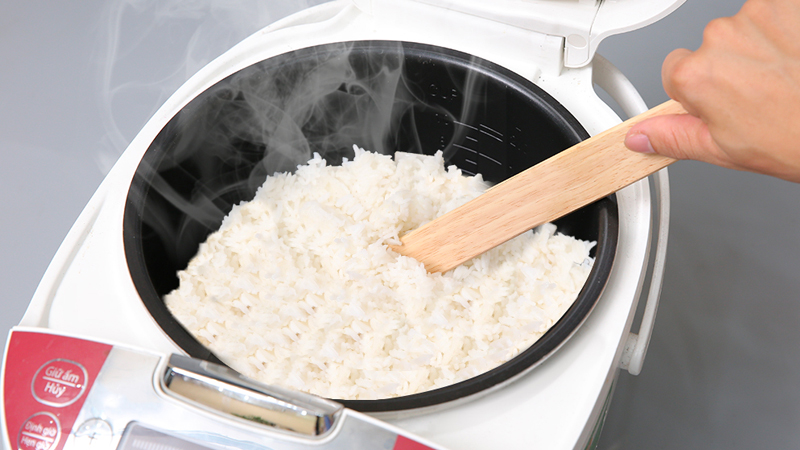 Fluff the rice, then let it steam for 10 minutes before serving
Fluff the rice, then let it steam for 10 minutes before serving
It is best to fluff the rice after it has finished cooking, allowing some steam to escape for about a minute. Then, cover the rice cooker and let it steam for an additional 10 minutes before serving. Check out our rice cooker collection to find the perfect one for your needs!
In addition to Japanese rice, ST25 rice from Vietnam has gained a reputation as the best rice in the world. Sample this award-winning rice at our restaurant!
While we may not use the same standards as the Japanese when it comes to rice, by following these simple tips, you can cook a pot of delicious, sticky rice for your family that rivals the quality of Japanese rice.


























